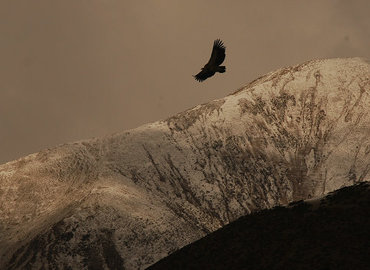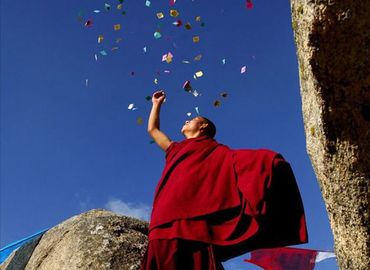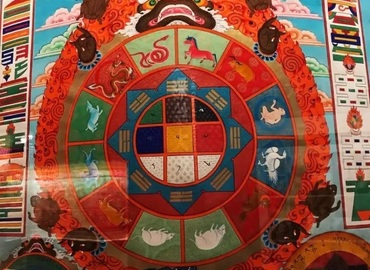Tibet Customs and Traditions
- Catherine
- Last Updated : 07/15/2025
Tibetan customs and traditions, nurtured by centuries of Buddhist influence and the harsh beauty of the plateau, create a way of life unlike anywhere else. Before setting foot in Tibet, it’s helpful to understand how deeply faith shapes everyday moments — from heartfelt greetings and religious practices to gatherings and etiquette. Each custom reflects the Tibetan people's profound connection to their beliefs, their land, and one another.
Tibetan Form of Greetings
Tashi Delek is a common greeting word in Tibet. Tashi means auspicious and Delek means good. It contains the best wishes such as good health and fortune. This simple Tibetan greeting word can not only shorten the distance between two people but also eliminate the feeling of strangeness. In Tibet, if someone says Tashi Delek to you, you should reply "Tashi Delek Shu (falling tone on Shu). Besides, some older Tibetan people even stuck out their tongues during the greeting, which is also a way to show welcome and sincerity.
Another interesting practice amongst Tibetans is presenting Khata to their guests. A Khata is a white woven scarf and offering it to guests, family members, seniors, and even deities is a popular tradition in Tibet. It is considered a practice of hospitality and respect.

Religious Customs
Tibetan Buddhism is the main religious belief of the Tibetan people. Tibetans express their deep devotion to the teachings of Buddhism through practices such as full-body prostrations, spinning prayer wheels, and hanging Wind Horse flags. Religious festivals such as the Tibetan New Year and Saga Dawa Festival are grand celebrations involving the participation of the entire community. Through activities like chanting scriptures, offering prayers, and performing songs and dances, they showcase the unique charm of Tibetan culture.
Prostration is a devout Buddhist ritual performed by Tibetan Buddhists to fulfill their faith, pray for blessings, and ward off misfortune. In front of Jokhang Temple in Lhasa, you will see many pilgrims performing full-body prostrations, allowing you to feel the mystery and power of religion.
Along Barkhor Street, you will also find many people holding prayer wheels of various sizes, chanting mantras softly. It is believed that as the prayer wheels spin rapidly, the practitioners accumulate merit just as quickly.
On rooftops and mountain passes, you will notice flags printed with Tibetan mantras, scriptures, images of Buddhas, and auspicious symbols fluttering in the wind — these are known as Wind Horse Flags.
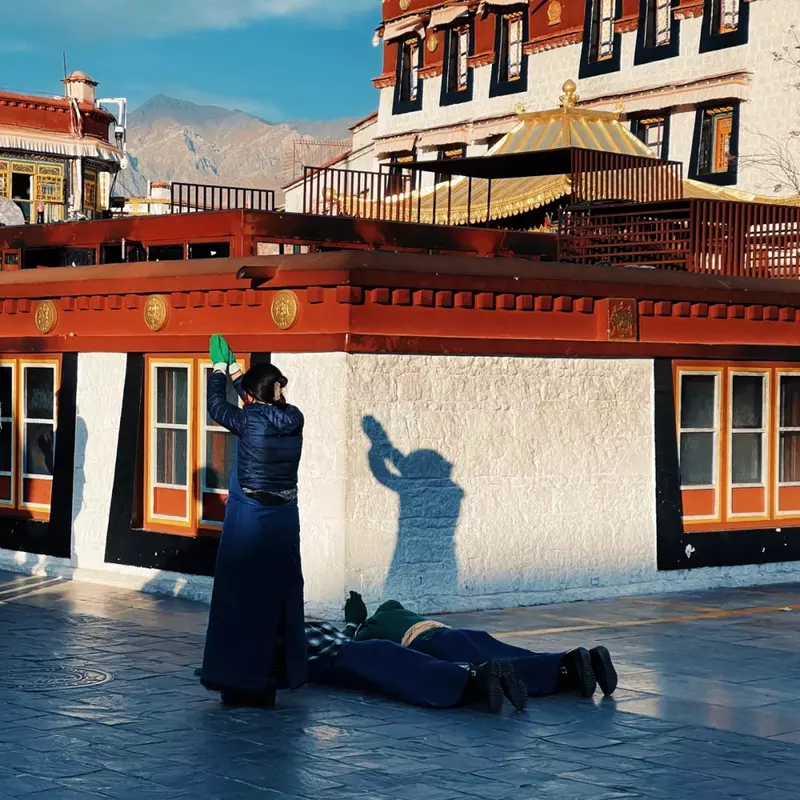
Etiquette for Visiting Religious Sites
Your will be incomplete without visiting Tibetan Buddhist monasteries and other religious sites. You should avoid wearing short skirts, short frocks, and extra small length shorts beforehand. When entering a monastery, please remain quiet and avoid wearing hats, smoking, touching Buddha statues, flipping through scriptures, or striking bells and drums. Also please refrain from handling the lamas’ personal religious items, such as amulets or prayer beads.
Since the monks inside are chanting their religious mantras, the tourists are expected to stand quietly while they look around the chapel. Even the way you look around is important as you are required to walk around in a clockwise manner. If it is a Bon monastery, you should move in an anti-clockwise manner.
Take extra care while looking at that you do enter any rooms that seem to be out of bounds. Most of the time, monks are in a process of ‘retreat’ and opening the doors may distract their prayers. Photography inside the temples is not allowed, so avoid taking pictures inside the temple.
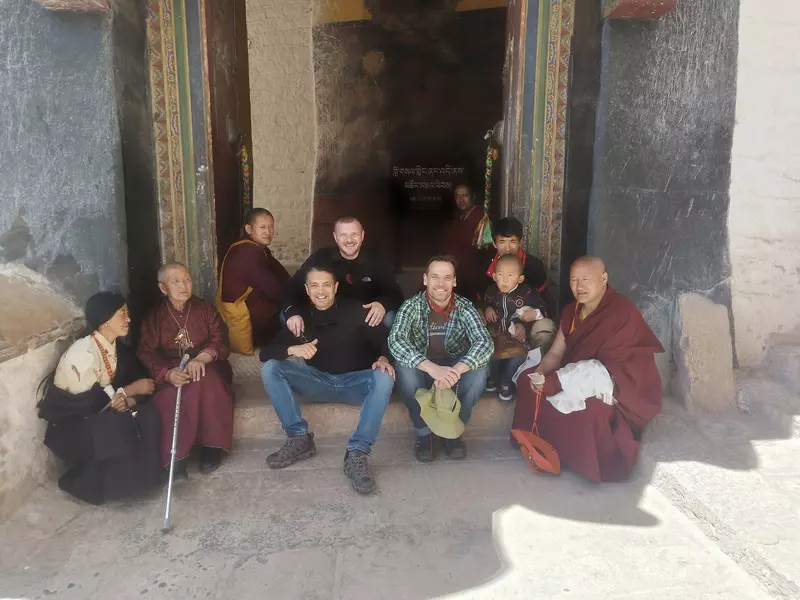
Dietary Customs
Firstly, Tibetans place great importance on avoiding the act of killing. Secondly, Tibetans absolutely do not eat donkey, horse, or dog meat, and in some regions, they also refrain from eating fish, but Tibetans consume beef, mutton, and pork. In daily life, most Tibetans rely on barley and tsampa as their staple foods.
Drinking butter tea is a traditional custom of the Tibetan people. When you are invited by the host to drink butter tea, be sure to accept the cup with both hands — this is a sign of respect toward the host. Don’t underestimate this small gesture; it’s an important moment that reflects your politeness.
The etiquette of eating in Tibet is highly valued. If you visit a Tibetan family and have a meal there, please avoid eating too much in one bite. When having a meal in a Tibetan home, sit cross-legged without gazing around the household. Also, be quiet when eating. If the Tibetan host offers a cup of wine, you should first dip your ring finger in it and flick the wine towards the sky and the ground. This is a sort of expression of respect to heaven, earth, and ancestors. The guest must first take three sips and the host will fill up the cup then the guest drinks the full cup—this is a customary rule that has long been established.
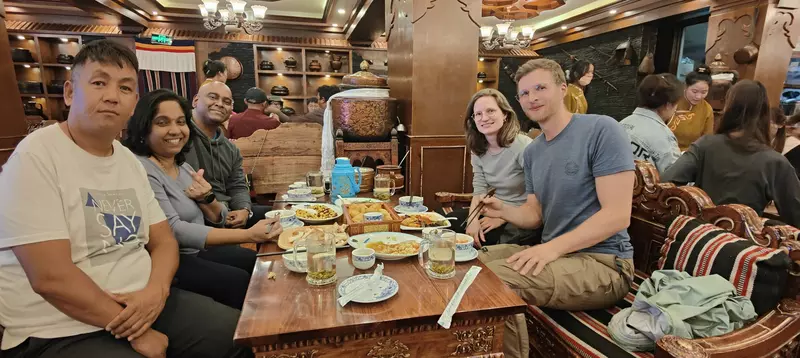
Tibetan Sky Burial
Sky burial is a traditional Tibetan funeral practice, commonly observed among Tibetans, and is also known as "bird burial." Its core belief is based on the idea of the soul’s immortality and the cycle of rebirth, viewing death as the separation of the soul from the body and a transformation into another realm. Tibetans believe that by offering the body to vultures, one performs the most noble act of giving, which helps cleanse sins and enables a better rebirth in the next cycle of existence.
In Tibet, sky burial practices are protected by law. At the same time, it is important to remember that only relatives and friends are allowed to attend the ceremony, and visits by curious onlookers are strongly discouraged.
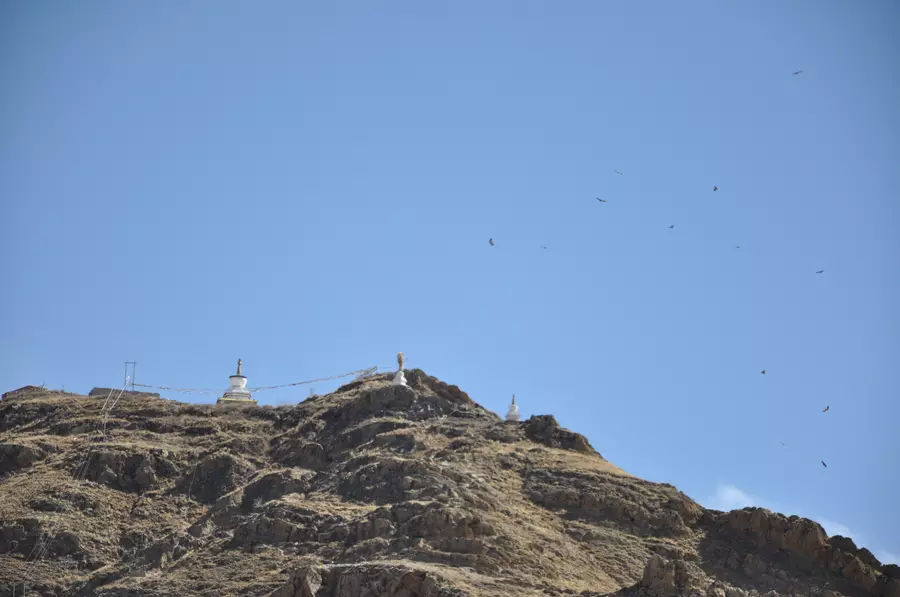
Conclusion
Tibetan customs and traditions, shaped by Buddhism and the plateau’s unique environment, reveal a culture of deep faith, hospitality, and respect for life. From the warm greeting of “Tashi Delek” to the solemn rituals at monasteries, careful dining etiquette, and the sacred sky burial, each aspect reflects the Tibetan people's devotion and way of life. As travelers, approaching these traditions with respect allows us to truly appreciate the enduring spirit of Tibet.
Email response within 0.5~24 hours.


